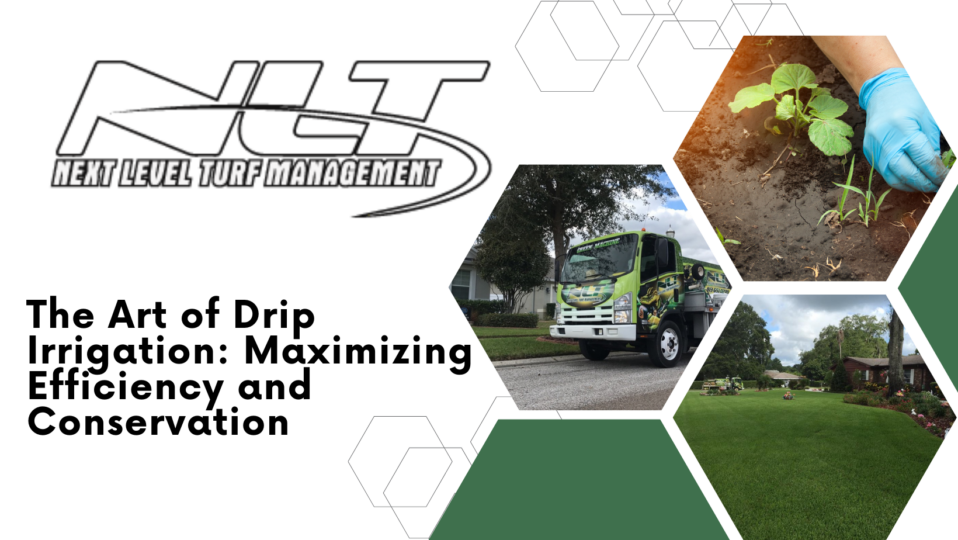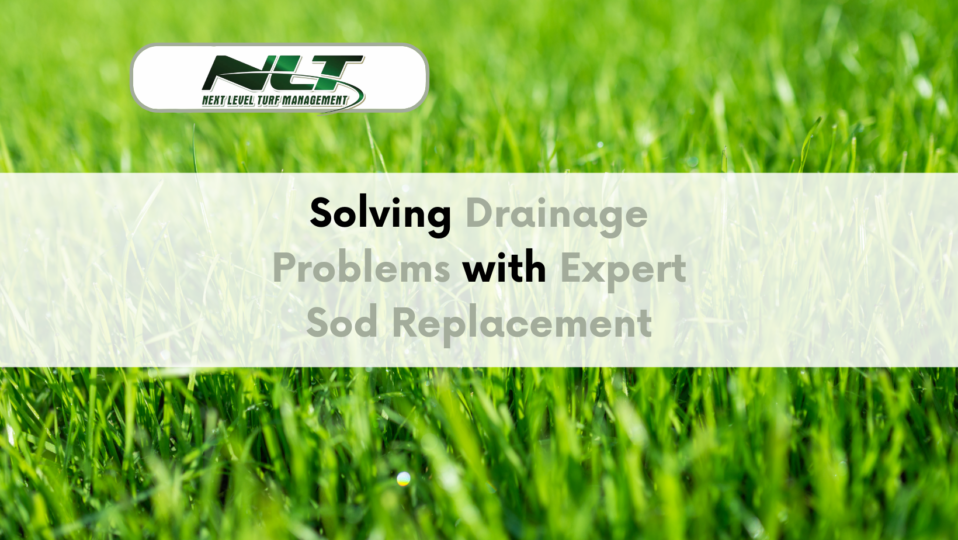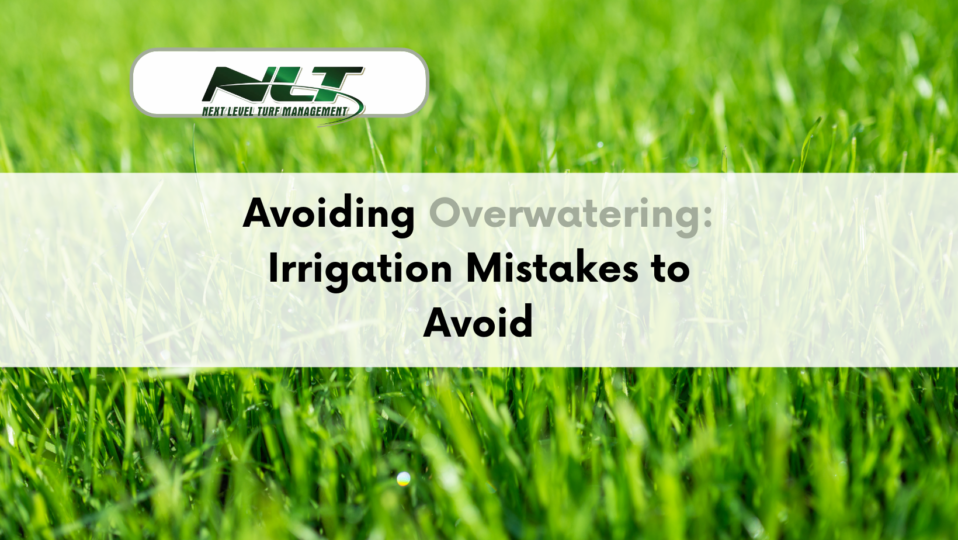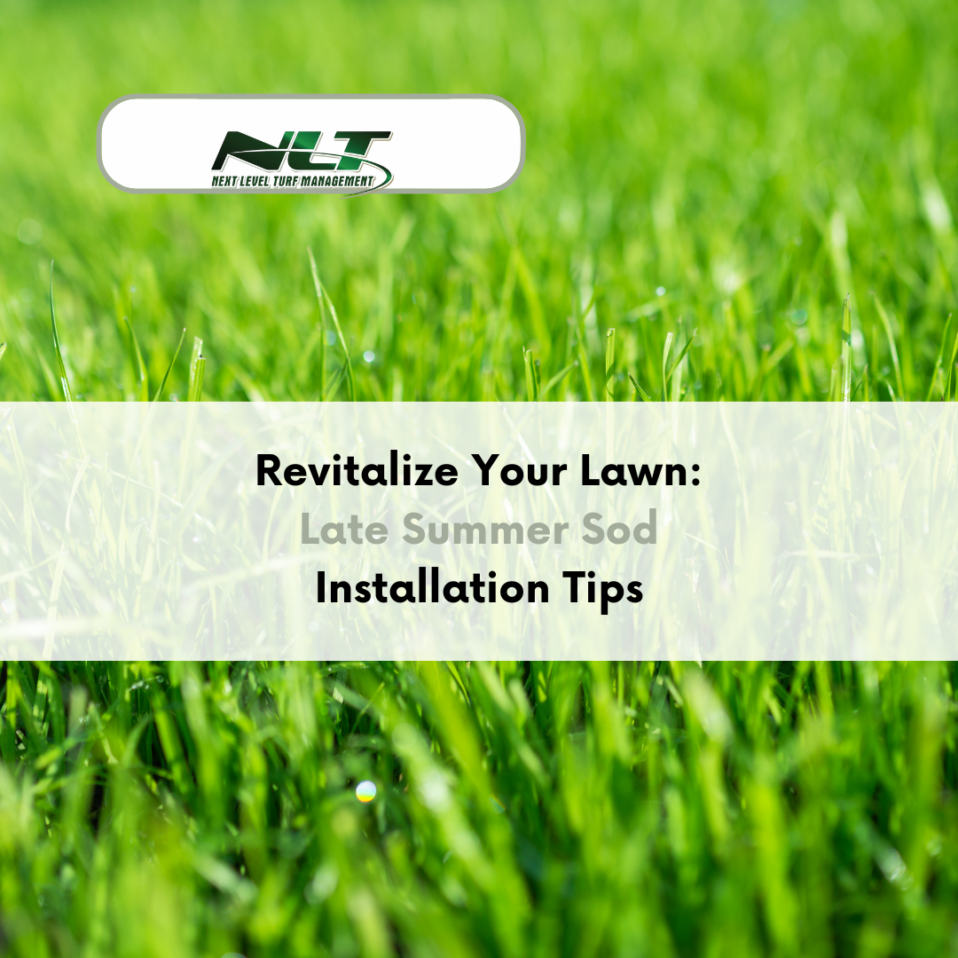Water conservation and efficient usage are increasingly important considerations for homeowners, particularly in regions like Central Florida, where high temperatures and drought periods can burden local water resources. Implementing effective methods to address these concerns while maintaining a healthy and beautiful lawn is essential. One such popular and successful approach is implementing drip irrigation, a technique that allows for precise water application, reduced runoff, and enhanced water conservation.
Drip irrigation offers numerous benefits, including more precise water application, reduced runoff, and enhanced water conservation, making it an ideal choice for environmentally-conscious homeowners. With the growing focus on sustainable landscaping practices, the need for knowledgeable and efficient implementation of such techniques has become paramount.
In this comprehensive article, we will delve into the fundamentals of drip irrigation, its various advantages, and tips on how to employ it effectively in your landscape. Whether you’re a seasoned gardener or simply seeking ways to improve your lawn’s health and sustainability, this guide will offer valuable insights and practical advice.
Let NextLevelTurf illuminate the path toward maximizing efficiency and conservation through the innovative and artful drip irrigation technique for a truly sustainable and vibrant outdoor oasis.
The Science Behind Drip Irrigation
Drip irrigation, sometimes referred to as micro-irrigation or trickle irrigation, is a method of applying water directly to the root zone of plants. This is accomplished through a network of tubes, emitters, and valves that slowly and precisely release water near the soil surface where plant roots can easily access it.
The origins of drip irrigation can be traced back to ancient civilizations that used clay pots and porous materials to irrigate crops. Modern systems have since evolved, incorporating advanced technology and materials to create highly efficient and customizable solutions.
By delivering precise amounts of water directly to the plants, drip irrigation avoids the shortcomings of traditional sprinkler systems, such as uneven coverage, evaporation, and runoff. This results in an efficient use of water resources, reduced operating costs, and improved plant health. In fact, according to a study conducted by the University of Florida, drip irrigation can save up to 50% of water compared to conventional overhead irrigation methods.
Advantages of Drip Irrigation
There are numerous advantages to implementing a drip irrigation system in your landscape and lawn. Some of the most notable benefits include:
1. Water conservation: As mentioned earlier, drip irrigation allows for significant water savings compared to traditional watering methods. The precise delivery of water to plant roots and the minimization of evaporation and runoff lead to reduced water usage and a lower environmental impact.
2. Enhanced plant health: Drip irrigation supplies a steady, slow release of water that more closely mimics natural rainfall. This encourages deep root growth and reduces stress on plants due to fluctuating moisture levels in the soil. Additionally, the targeted watering prevents the excessive wetting of plant foliage, which can lead to the spread of diseases.
3. Weed suppression: By watering only the desired plants, drip irrigation reduces the likelihood of weed growth. In turn, this can reduce the need for herbicides and save you time and effort spent on manual weed control.
4. Fertilizer efficiency: Drip irrigation systems can be combined with fertilizer injection systems to apply nutrients directly to plant roots. This results in improved nutrient absorption and reduced leaching of fertilizers into the environment.
Components of a Drip Irrigation System
A well-designed drip irrigation system requires several essential components for optimal performance:
1. Water source and filtration: Whether drawing from a well, municipal water supply, or a reclaimed water source, it’s important to have a suitable filter in place. Filtration helps remove debris and sediment that can clog emitters and impair system performance.
2. Pressure regulator: Most drip irrigation systems require a specific operating pressure, typically between 10-30 PSI (pounds per square inch). A pressure regulator ensures the system operates within the appropriate range and prevents damage to system components.
3. Mainline tubing: This is the primary conduit delivering water from the source to the individual drip lines or micro-irrigation tubing. Mainline tubing is typically constructed from polyethylene and is available in various diameters depending on water flow needs and capacity.
4. Sub-main tubing and emitter lines: These smaller-diameter tubes branch off from the mainline tubing and are equipped with emitters that release water directly onto the soil surface. Emitters can vary in flow rates and spacing to accommodate different plant types and watering requirements.
5. Valves and controllers: To regulate the flow of water within the system, a combination of manual and automatic valves can be utilized. Controllers, such as smart irrigation controllers or timers, can automate the scheduling of watering cycles, providing consistent, worry-free water management.
Designing and Installing a Drip Irrigation System
Designing and installing a drip irrigation system may be a complex task, but with careful planning and attention to detail, you can create an efficient and effective solution for your landscape. Here are some steps to help guide you in developing a successful drip irrigation layout:
1. Assess your landscape: Before designing your system, determine the requirements of your lawn and plants, considering factors such as water availability, soil type, topography, plant species, and local climate conditions.
2. Customize your design: Tailor your system to fit the unique needs of your landscape by selecting appropriate emitter flow rates and spacing. Differentiate between zones for lawns, flower beds, and shrubs, adjusting the design accordingly.
3. Plan for future growth: When designing your system, consider potential landscape changes or expansions. Choose components and tubing sizes that will accommodate future water needs and potential system modifications.
4. Gather necessary tools and materials: To successfully install your drip irrigation system, ensure you have the appropriate tools and materials, such as tubing, emitters, filters, and connectors, as well as installation tools like tubing cutters and hole punches.
5. Install the system: Carefully and thoughtfully install the drip irrigation system components, following the design you have crafted. Pay special attention to the placement and installation of emitters and tubing to ensure optimal plant water distribution.
Maintenance and Troubleshooting of Drip Irrigation Systems
To ensure your drip irrigation system remains efficient and effective, regular maintenance and timely troubleshooting are crucial. Here are several maintenance and troubleshooting tips to keep your system in peak condition:
1. Inspect regularly: Periodically check your system for leaks, breaks, or damage to tubing, emitters, and connectors. This is particularly important after seasonal temperature changes or landscaping work to ensure the continued integrity of the drip irrigation system.
2. Flush the system: At least twice per year, open the ends of your drip tubing to flush out any accumulated debris or sediment. This helps prevent clogs and ensures a consistent water flow throughout the system.
3. Clean filters: Depending on your water source, filters can accumulate debris more or less frequently. Periodically clean or replace your filter according to the manufacturer’s recommendations to maintain optimal water flow and prevent clogging of emitters.
4. Monitor pressure: Use a pressure gauge to verify that your system is operating within the appropriate pressure range. If the pressure is too high or low, adjust your pressure regulator or investigate potential system issues.
5. Test emitters: Inspect your emitters periodically to make sure they are releasing water at the correct flow rate. Clogged or damaged emitters can lead to uneven watering and compromised plant health.
6. Keep an eye on plant health: Regularly assess the health of your plants, as this can be an indicator of potential issues with your drip irrigation system. If you observe wilting, yellowing, or other signs of stress, investigate and address possible malfunctions in the watering system.
Drip Irrigation for Different Plant Types
Drip irrigation can be customized to accommodate varying plant needs, ensuring that each type receives the appropriate amount of water. Here’s how to adapt the system to the distinct demands of different plants:
1. Lawns and grasses: For larger grassy areas, consider using subsurface drip tubing designed specifically for turfgrass. These systems are installed below the soil surface, reducing the risk of damage from mowing or foot traffic. When selecting emitters for lawn applications, use a more closely spaced configuration to ensure even water distribution across the root zone.
2. Flower beds and ground covers: For densely planted areas, use closely spaced emitters that provide a gentle mist or blanket of water to ensure consistent moisture availability. Alternately, a micro-sprinkler or micro-spray system can be utilized to provide similar coverage within flower beds.
3. Trees and shrubs: Larger trees and shrubs require deeper, less frequent watering to promote deep root growth. Utilize emitters with lower flow rates and wider spacing to accommodate these plants. In some cases, multiple emitters may be required for even water distribution around the base of larger trees.
4. Vegetable gardens: In vegetable gardens, configuring your drip system with emitter spacing that matches the plant spacing can improve water usage efficiency. Installing shut-off valves for individual plant rows can be beneficial, allowing you to adjust watering based on each crop’s specific requirements.
By considering the unique water needs of different plant types, you can customize your drip irrigation system to provide appropriate and efficient water delivery, contributing to a healthier and more sustainable landscape.
Converting an Existing Sprinkler System to Drip Irrigation
If you already have a traditional sprinkler system in place, converting it to a drip irrigation system is not only possible but also relatively simple. The process typically involves these general steps:
1. Identify zones: Determine which zones within your existing system can benefit from conversion to drip irrigation. Focus on areas with plants that require localized and controlled watering, such as flower beds, vegetable gardens, or individual trees and shrubs.
2. Choose appropriate components: Select drip irrigation components that can be connected to your existing irrigation system, such as adapters to fit the existing pipes and compatible tubing, emitters, and connectors.
3. Turn off the water: Before beginning conversion work, ensure that the water supply is turned off to avoid flooding, damage, or injury.
4. Remove old components: Carefully remove sprinkler heads, nozzles, or risers that won’t be utilized in the new drip system. The existing pipes can often be repurposed to deliver water to the mainline of the new drip irrigation system.
5. Connect new components: Connect the drip system components in accordance with your planned design. This typically involves attaching adapters to the existing pipes, securing the mainline tubing, and adding sub-main lines and emitters as needed.
6. Pressure regulation: Drip systems generally require lower pressures than traditional sprinklers. Install a pressure regulator to ensure the drip irrigation system operates within the appropriate pressure range.
7. Test the system: Turn on the water supply and verify that emitters are functioning correctly and there are no leaks in the system. Make adjustments as needed to ensure optimal performance.
Best Practices for Water Conservation
While drip irrigation is an excellent method for conserving water and maximizing efficiency, other practices can complement its implementation and further promote water conservation. Here are some additional measures worth considering:
1. Mulching: Applying organic mulch around plants helps to retain moisture, regulate soil temperature, and reduce evaporation, boosting the effectiveness of your drip irrigation system.
2. Choosing drought-tolerant plants: Incorporating native, drought-tolerant species into your landscape can minimize water demand while promoting biodiversity.
3. Water scheduling: Watering during the early morning or evening hours when temperatures are cooler and evaporation rates are lower can increase the effectiveness of your irrigation system.
4. Utilizing rainwater: Installing a rainwater collection system or rain barrels can allow you to make use of natural precipitation and reduce reliance on municipal water supplies.
By incorporating these best practices alongside your drip irrigation system, you can truly maximize water conservation efforts and enjoy a vibrant, sustainable landscape.
Header 9: Types of Emitters and Their Applications
Emitters play a critical role in drip irrigation systems, ensuring that precise amounts of water are directly supplied to the base of plants. There are several types of emitters available, each suited to specific application needs. Some of the most common types include:
1. Drip emitters: These emitters release water droplets at a slow, steady rate, providing better absorption and slower evaporation. Drip emitters are ideal for small to medium-sized plants, such as shrubs, perennials, or annuals, that need consistent moisture levels.
2. Micro-sprinklers and micro-sprayers: Micro-sprinklers produce fine droplets of water distributed over a specific, short radius, while micro-sprayers disperse a fine mist over a larger area. Both types are well-suited for densely planted areas, flower beds, or ground covers that need thorough watering.
3. Bubbler emitters: Bubbler emitters release a steady stream of water and are often used for deep-rooted plants, like trees or large shrubs, that require more water than drip emitters can provide.
4. Soaker hoses and porous emitter tubing: Soaker hoses and porous emitter tubing are made of permeable materials that allow for water to slowly seep along their length. These are ideal for garden beds, borders, or alongside hedges, providing a continuous stream of water over a larger area.
By selecting the appropriate emitter type for your specific needs, you can ensure effective water management that caters to the unique requirements of your plants and landscape.
Drip Irrigation in Greenhouses and Container Gardens
Drip irrigation systems are not limited to outdoor landscapes or large-scale agriculture. They can also be effectively employed in greenhouses and container gardens, providing similar benefits in terms of water conservation, plant health, and fertilization efficiency. Here’s how to apply drip irrigation in these settings:
1. Greenhouse drip irrigation: In greenhouses, drip irrigation can be easily tailored to accommodate individual plants or rows. By installing a drip line or emitter tubing alongside each plant, you can provide precise amounts of water without wasting resources. You can also integrate a fertigation system, supplying nutrient solutions directly to each plant, enhancing growth while minimizing waste and runoff.
2. Container gardens: For small-scale gardening or urban environments, drip irrigation can be adapted to water container plants or raised beds efficiently. Using drip lines or emitter tubing placed directly on the soil surface in each container, you can provide even water distribution and optimize plant performance. The addition of a timer or controller can further simplify water management and contribute to maintaining consistent moisture levels.
By applying drip irrigation principles to greenhouses and container gardens, you can reap the benefits of efficient water use and plant health in confined or specialized gardening environments.
Smart Controllers and Drip Irrigation
The integration of smart controllers or timers in your drip irrigation system can automate and improve the overall performance and efficiency of water management. Some key benefits and features of smart controllers include:
1. Scheduled watering: Smart controllers can be programmed to activate your drip irrigation system at specific times and intervals, ensuring consistent watering cycles that adapt to the seasonal needs of your plants.
2. Weather-based adjustments: Some smart controllers feature built-in weather monitoring or are compatible with external weather sensors that allow for automatic watering adjustments based on current or forecasted conditions. This can result in reduced water usage during rainy periods or increased watering during times of high temperatures and evaporation.
3. Remote control and monitoring: Many smart controllers come with mobile app compatibility, enabling you to monitor and manage your drip irrigation system remotely. This feature provides increased flexibility and ensures that watering adjustments can be made on-demand, even when you are away from home.
4. Garden data collection: Some advanced smart controllers can collect data on watering history, plant performance, and localized weather conditions. This information can be used to optimize your watering schedule and further enhance the efficiency and effectiveness of your drip irrigation system.
Environmental Benefits of Drip Irrigation
Beyond the obvious advantages of water conservation and efficient resource use, drip irrigation systems provide additional environmental benefits that can contribute to a more sustainable landscape. Some key environmental benefits include:
1. Reduced erosion: By minimizing water runoff, drip irrigation reduces soil erosion and sedimentation in nearby water bodies. This preserves the integrity of your landscape and prevents the degradation of aquatic ecosystems.
2. Protection of groundwater resources: The precise application of water and nutrients in a drip irrigation system reduces the risk of leaching and groundwater contamination from fertilizers and pesticides.
3. Lower carbon footprint: By using less water and rejecting traditional sprinkler systems that rely on higher-energy water pumps, drip irrigation contributes to a reduction in energy use and, consequently, a decreased carbon footprint.
4. Habitat preservation: Drip irrigation systems have been shown to have a positive impact on biodiversity and habitat preservation by promoting the use of native and drought-tolerant plants, which require less water and encourage the presence of local fauna.
Through smart design and implementation of drip irrigation systems, you can not only ensure efficient water use but also contribute to a more sustainable and environmentally friendly landscape.
Final Thoughts: Embrace the Future of Water Conservation with Drip Irrigation
This method is a highly effective and resource-efficient method of watering that caters to a wide range of applications, from outdoor landscapes to greenhouses and container gardens. With environmental benefits such as water conservation, reduced soil erosion, and a lower carbon footprint, drip irrigation is a forward-thinking solution for gardeners, landscapers, and agricultural professionals looking to promote sustainable practices while maintaining lush and healthy plant growth.
NextLevelTurf is committed to providing the latest advancements in drip irrigation technology, offering high-quality components, expert design, and dependable support to ensure the success and satisfaction of our valued clients. By partnering with NextLevelTurf, you too can experience the countless benefits of a well-designed and maintained drip irrigation system.
Are you ready to take the next step in enhancing your landscape while preserving our precious water resources? Contact NextLevelTurf today to discuss your drip irrigation needs by clicking here and embark on a journey toward a more sustainable, efficient, and flourishing outdoor environment.







Post a comment